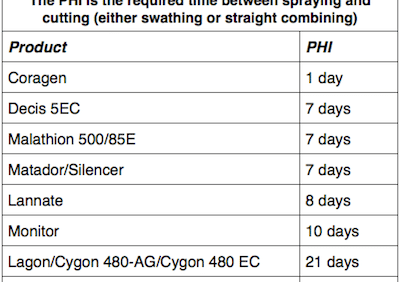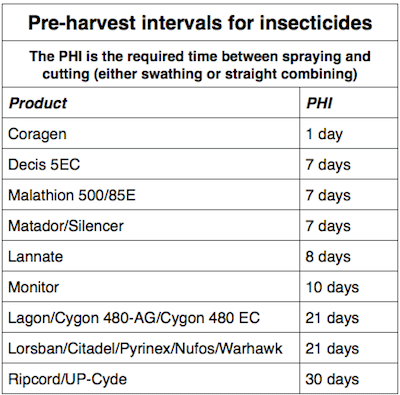Insect threats are minimal at this stage of the season, but if you have late fields and an insect hot spot — say for bertha armyworm — the options are limited.
Pesticides applied after the pre-harvest interval could leave traces on canola seed, and those traces can be detected along the transportation route (either by local elevators or at port) or worse, by the end user. One shipment that tests high for pesticide residue will have an immediate cost, in that the ship may have to bring the load home or re-route it, and likely a long term cost in terms of added testing and potential delays to re-access that market.
Growers as well as applicators have a responsibility to know and follow pre-harvest intervals for all products. This time of year it is especially obvious where planes are coming from and what fields they’re spraying because there aren’t that many working.


